Belize Flag Meaning
A blue field with red stripes along the top and bottom edges and the national coat of arms in a white circle at the center, representing the ruling People's United Party, the opposition United Democratic Party, and the peace that unites them, making it the only national flag to feature human figures.
- Continent
- North America
- Adopted
- 1981
- Ratio
- 2:3
- Colors
- blue, red, white
- Designer
- Unknown
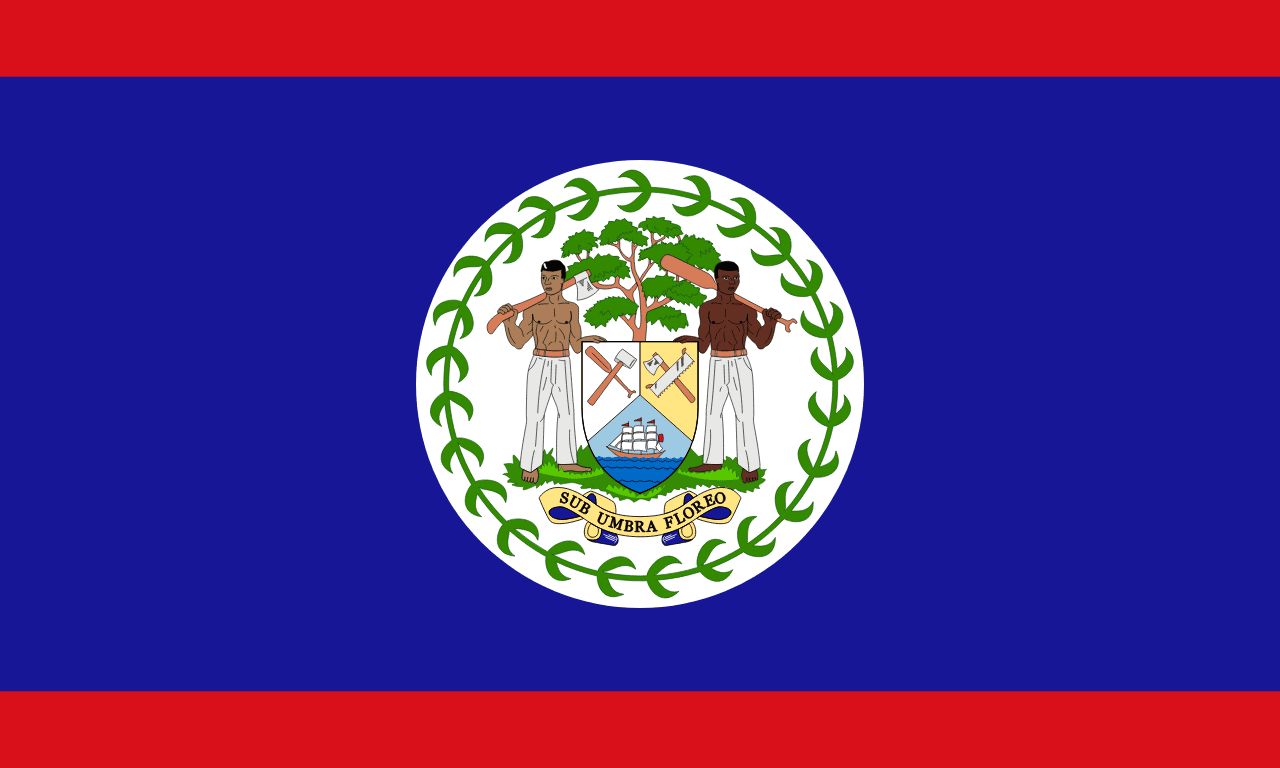
Symbolism
Blue Field: Represents the Caribbean Sea that borders Belize and the color of the People's United Party that led the independence movement, symbolizing the maritime heritage and political leadership of the nation.
Red Stripes: Added to represent the opposition United Democratic Party and ensure the flag represented all Belizeans regardless of political affiliation, symbolizing unity and the democratic process.
White Circle: Represents peace and provides the background for the coat of arms, symbolizing the harmony that should exist among all citizens and political parties in the diverse nation.
Coat of Arms with Human Figures: Features two men (one Mestizo, one Afro-Caribbean) supporting a shield with mahogany tree and tools, representing the diverse population working together and the logging industry that built the colonial economy.
History
- Pre-Columbian Era: The Maya civilization flourished in the region for over 2,000 years, building sophisticated cities like Caracol, Xunantunich, and Lamanai that demonstrate advanced knowledge of astronomy, mathematics, and architecture.
- 1600s-1700s: British logwood cutters and pirates established settlements along the coast, exploiting mahogany and logwood while fighting Spanish attempts to control the territory, creating a unique colonial society.
- 1798: The Battle of St. George's Caye saw British settlers and their slaves defeat a Spanish invasion fleet, establishing British control and becoming a foundational myth of Belizean independence.
- 1862: The British Crown Colony of British Honduras was formally established, bringing direct colonial administration while maintaining the unique social structure based on logging, slavery, and later indentured labor.
- 1930s-1950s: Economic hardship and the influence of Marcus Garvey's pan-African movement led to labor unrest and the formation of political parties advocating for self-governance and workers' rights.
- 1954: Universal adult suffrage was introduced and the People's United Party, led by George Cadle Price, won the first general election, beginning the march toward independence.
- 1973: The colony was renamed from British Honduras to Belize, reflecting growing national consciousness and the desire to break with the colonial past while maintaining British protection.
- 1975: The current flag design was adopted, replacing the colonial Blue Ensign with a design that incorporated both major political parties' colors and emphasized national unity.
- September 21, 1981: Belize gained independence from Britain under Prime Minister George Cadle Price, becoming the last British colony in mainland Americas to achieve independence.
- 1980s-1990s: Massive immigration from Central American civil wars, particularly Guatemala and El Salvador, significantly changed Belize's demographic composition and brought new challenges.
- 1991: Guatemala finally recognized Belize's independence after decades of territorial claims, though border disputes and Guatemalan immigration continue to create tensions.
- 2000s-Present: Belize has developed tourism and offshore banking while struggling with crime, drug trafficking, and the need to diversify its economy beyond traditional agriculture and services.
Trivia
- Belize is the only country in Central America where English is the official language, though Spanish, Kriol, and Maya languages are widely spoken reflecting its diverse heritage.
- The flag is unique in that it's the only national flag in the world to depict human beings, specifically two men representing the country's ethnic diversity.
- Belize has the lowest population density in Central America with only about 400,000 people in an area roughly the size of Massachusetts.
- The Belize Barrier Reef is the second-largest coral reef system in the world and a UNESCO World Heritage site, crucial for tourism and marine biodiversity.
- The flag represents a country that is simultaneously Caribbean, Central American, and Latin American, creating a unique cultural blend found nowhere else.
- Belize is home to the world's only jaguar preserve, the Cockscomb Basin Wildlife Sanctuary, protecting this endangered big cat and its rainforest habitat.
- The country has over 900 Maya archaeological sites, with many still unexcavated, making it one of the richest areas for Maya heritage in the region.
- Kriol, developed from English and West African languages during the slavery period, serves as the lingua franca among Belize's diverse ethnic groups.
- The flag flies over a country where the Queen of England remained head of state until her death in 2022, with King Charles III now serving in that role.
- Belize is known for having more than 10 distinct ethnic groups, including Creole, Mestizo, Maya, Garifuna, East Indian, Chinese, Lebanese, and Mennonite communities.
- The country celebrates September celebrations throughout the month, combining Independence Day and the Battle of St. George's Caye Day in extended national festivities.
- Traditional Belizean cuisine reflects its diversity, featuring dishes like rice and beans with stew chicken, hudut (Garifuna fish and coconut stew), and Maya chocolate.
- Belize is a major transit point for drugs moving from South America to North America, creating significant challenges with crime and corruption.
- The flag represents a country where the Mennonite community maintains traditional farming practices and German dialect while contributing significantly to agriculture.
- Despite its small size, Belize punches above its weight in environmental conservation, with about 60% of its land area under some form of environmental protection.
Related Countries

Guatemala
North America
Three vertical stripes of blue, white, and blue with the national coat of arms centered on the white stripe, representing the Pacific and Atlantic oceans, peace, and the sovereignty of the Republic of Guatemala.
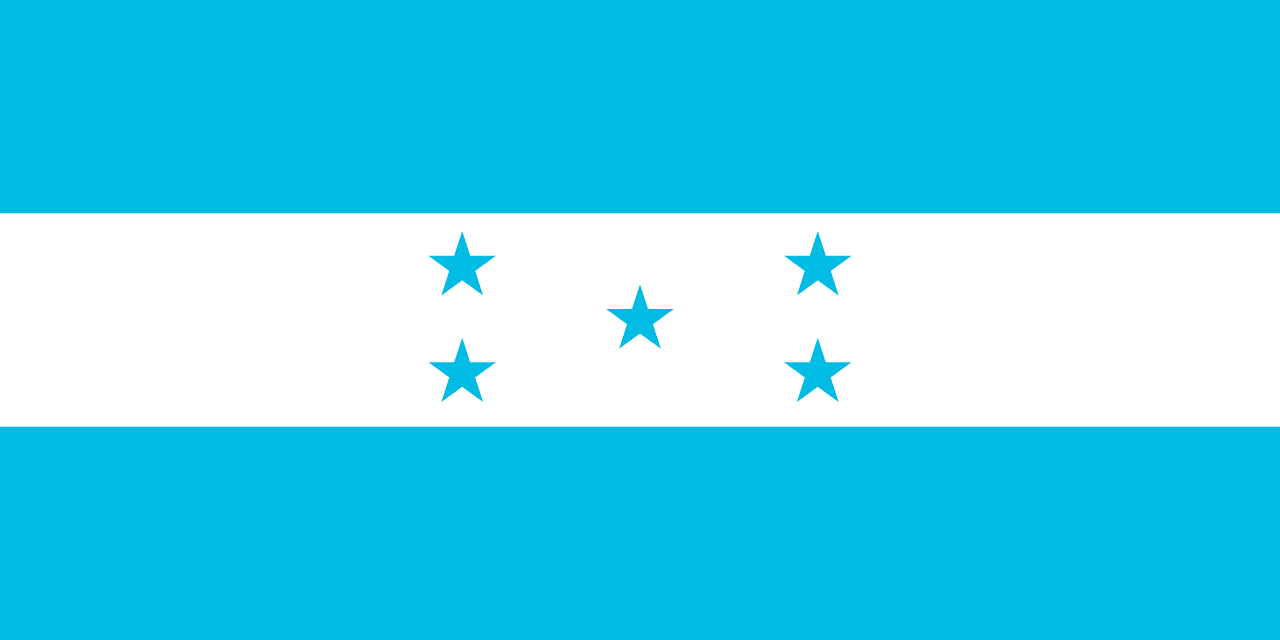
Honduras
North America
Three horizontal stripes of blue, white, and blue with five blue five-pointed stars arranged in an X pattern on the white stripe, representing the Pacific and Atlantic oceans, peace, and the hope for Central American unity.
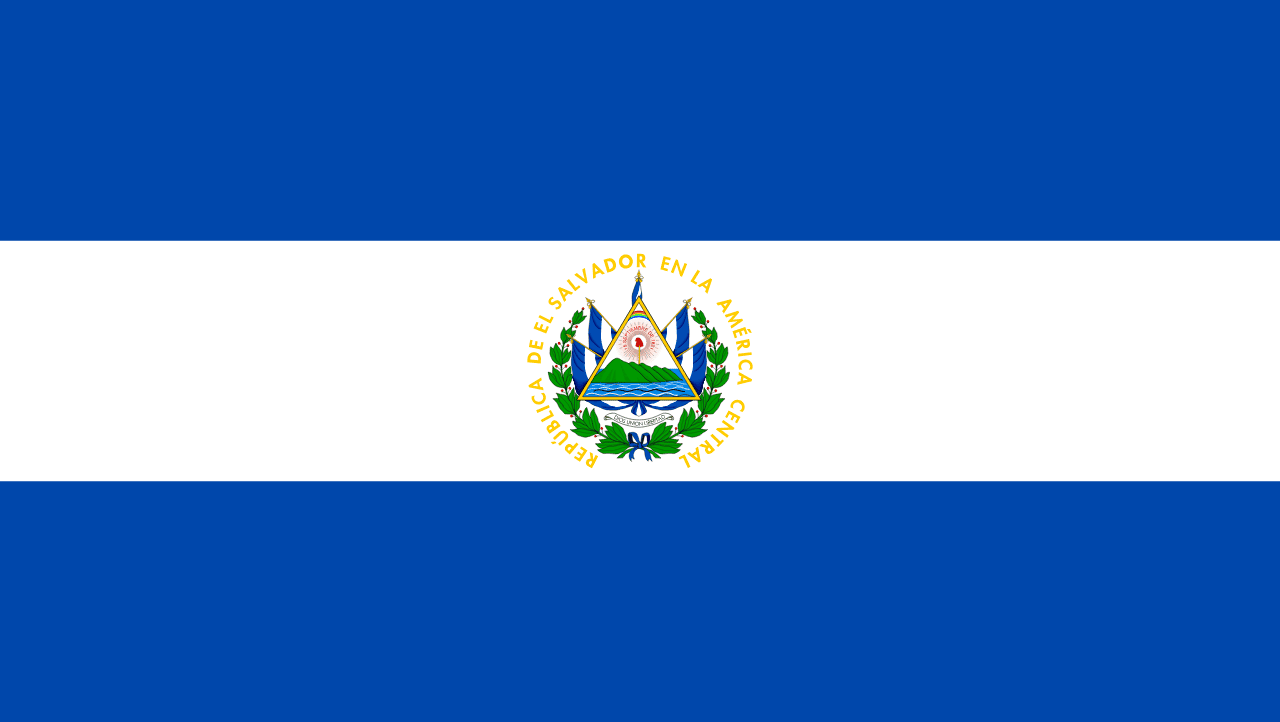
El Salvador
North America
Three horizontal stripes of blue, white, and blue with the national coat of arms centered on the white stripe, representing the Pacific and Atlantic oceans, peace, and the hope for Central American unity.
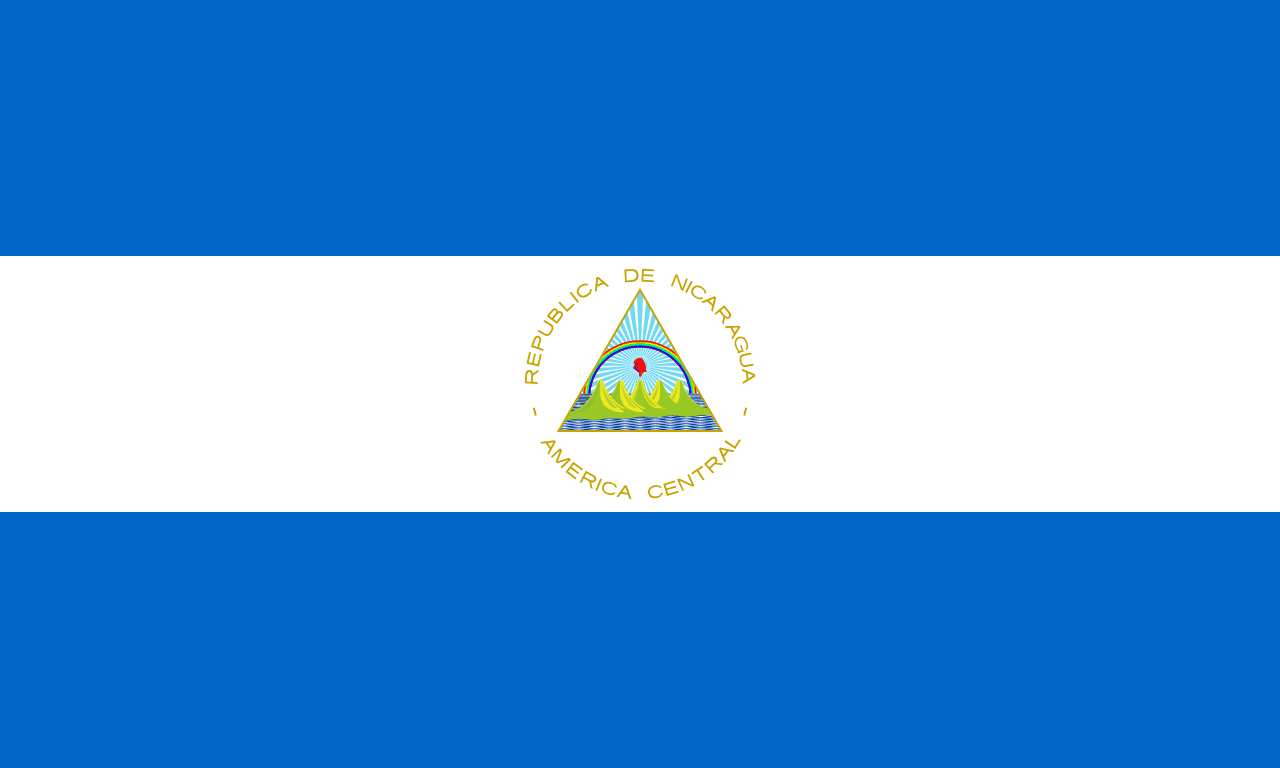
Nicaragua
North America
Three horizontal stripes of blue, white, and blue with the national coat of arms centered on the white stripe, representing Nicaragua's position between two oceans and its revolutionary ideals of liberty and peace.
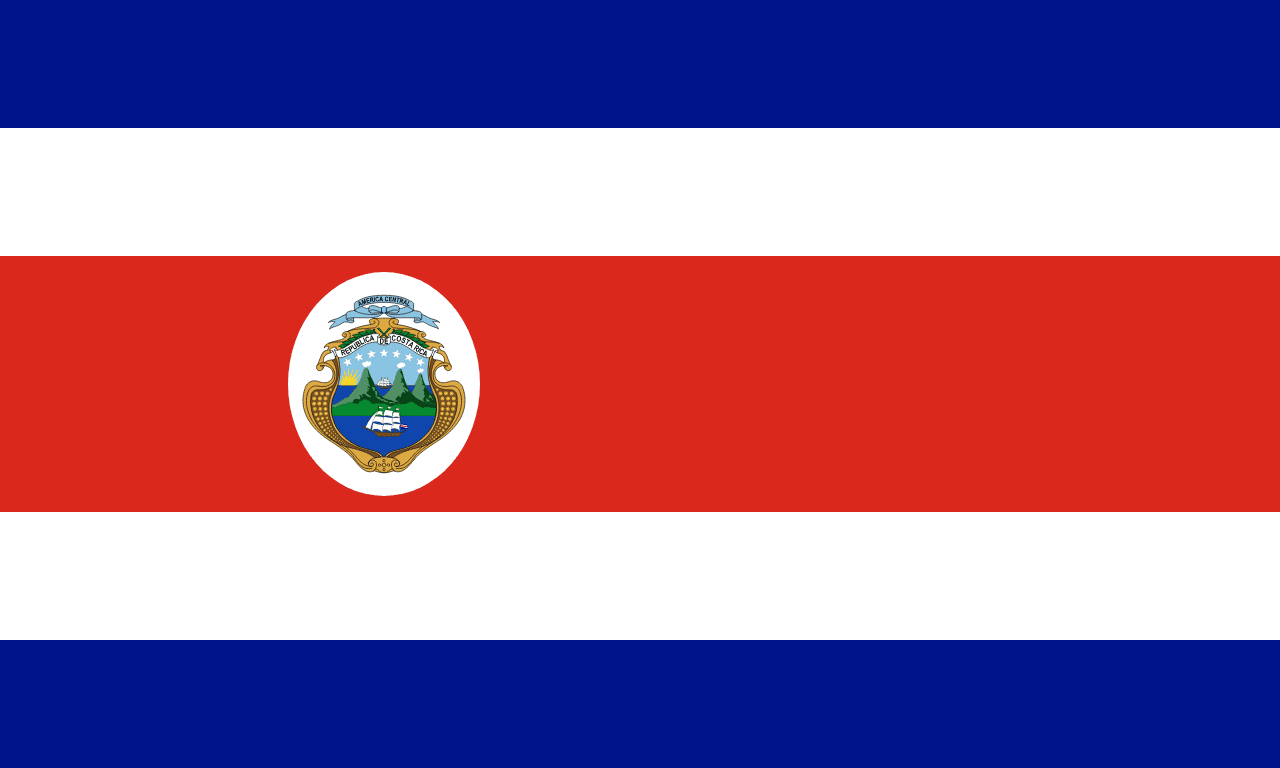
Costa Rica
North America
Five horizontal stripes with blue at top and bottom, white stripes below and above the central red stripe, and the national coat of arms on the red stripe, representing the sky and opportunities, peace, and the warmth of the Costa Rican people.
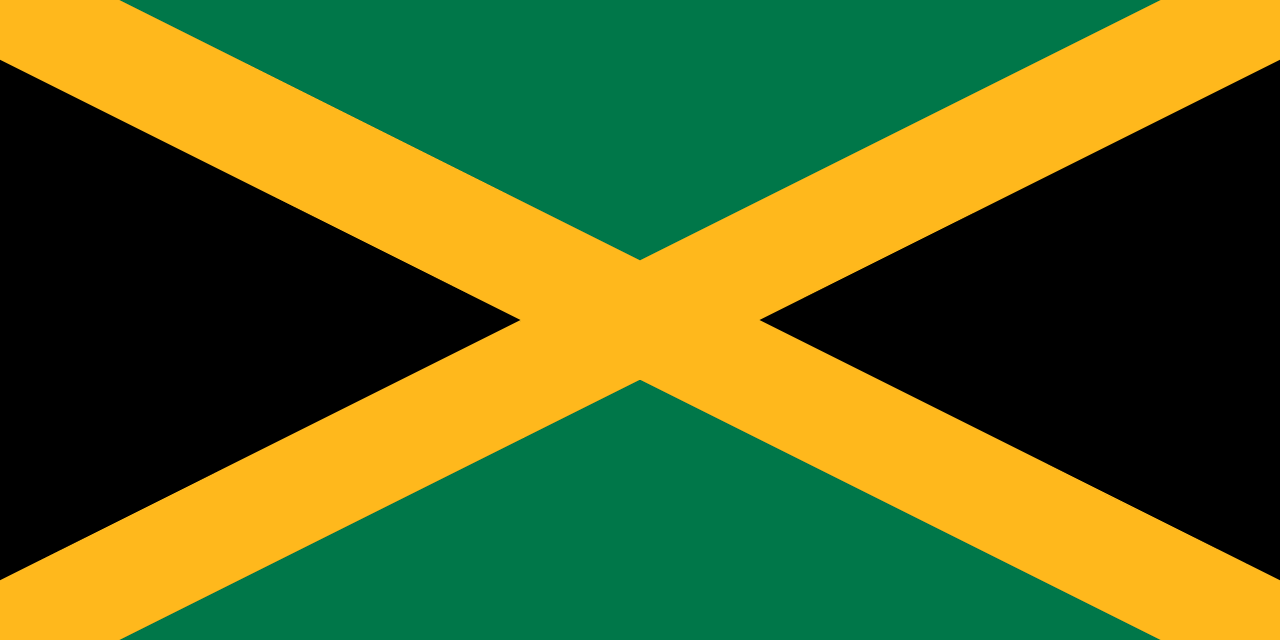
Jamaica
North America
A diagonal cross pattern dividing the flag into four triangles, with green triangles at top and bottom, black triangles at hoist and fly, and yellow diagonal cross, symbolizing the natural beauty, strength of the people, and golden sunshine of Jamaica.